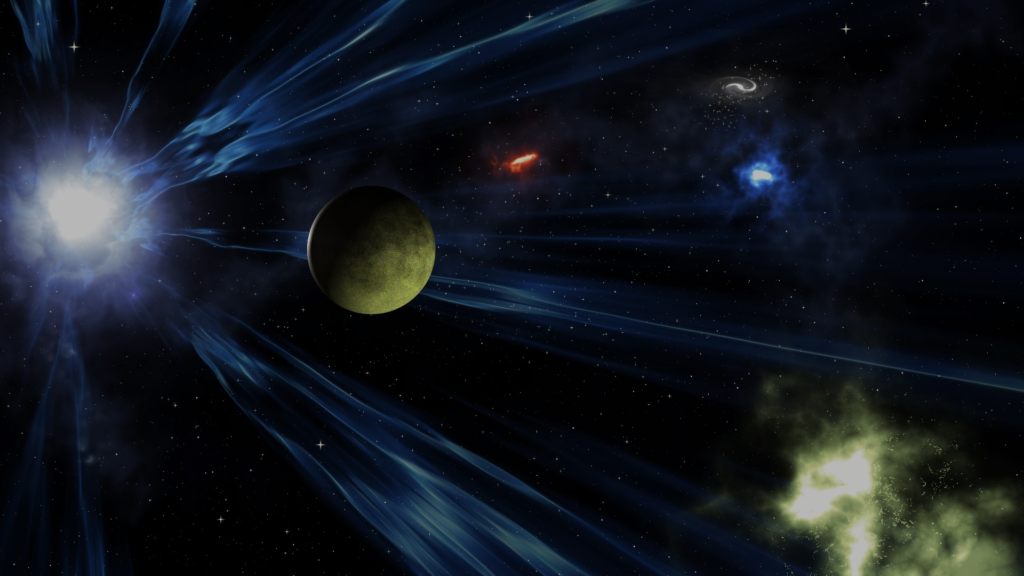## A Journey Through the Milky Way Galaxy: Its Structure and Wonders
Have you ever looked up at the night sky and felt a sense of awe, wondering about the vastness of space? We are all inhabitants of a magnificent spiral galaxy – the Milky Way – a swirling city of stars, gas, and dust spanning over 100,000 light-years! This incredible cosmic structure is our home, and understanding its intricacies unveils some of the universe’s most fascinating secrets. Join me on a journey to explore the wonders of our Milky Way Galaxy!
### 1. A Cosmic Spiral: Understanding the Milky Way’s Structure
Imagine a giant, spinning pinwheel. That’s a simplified picture of our Milky Way. It’s a spiral galaxy, meaning it has a central bulge of stars surrounded by long, sweeping arms that spiral outwards. These arms are regions of concentrated stars, gas, and dust, where much of the star formation occurs.
* **The Galactic Bulge:** At the heart of the Milky Way lies a dense, spherical region packed with older stars. This bulge is thought to contain a supermassive black hole, Sagittarius A*, around which everything else orbits. It’s roughly 10,000 light-years across.
* **The Galactic Disk:** This is the flattened, rotating disk where the spiral arms reside. It contains younger stars, gas clouds (nebulae) – the stellar nurseries where new stars are born – and interstellar dust. Our Sun is located within this disk, about halfway out from the center, in a relatively quiet area between arms.
* **The Galactic Halo:** Surrounding the disk and bulge is a vast, spherical halo of sparsely distributed stars, globular clusters (dense groups of hundreds of thousands of stars), and dark matter. These stars are generally older than those in the disk.
### 2. Star Formation: The Milky Way’s Stellar Nurseries
The spiral arms of the Milky Way aren’t just pretty; they are bustling factories of stars! Giant molecular clouds, vast reservoirs of cold hydrogen gas and dust, collapse under their own gravity. As they collapse, they fragment into smaller clumps, which further condense to form protostars – the embryonic stage of a star. Once the core temperature and pressure become high enough, nuclear fusion ignites, and a new star is born! These events often trigger the formation of multiple stars within a single cloud, leading to star clusters. Think of the Orion Nebula, a vibrant stellar nursery visible to the naked eye, as a prime example.
### 3. The Milky Way’s Galactic Neighbors and Beyond
The Milky Way isn’t alone. It’s part of a larger group of galaxies called the Local Group, which includes our nearest large galactic neighbor, the Andromeda Galaxy. These galaxies are gravitationally bound and interact with each other. Beyond the Local Group lies the even larger Virgo Supercluster, a vast collection of galaxy clusters, including our own. Understanding the Milky Way’s position within this cosmic hierarchy helps us comprehend the large-scale structure of the universe.
### 4. Dark Matter: The Invisible Hand Shaping the Galaxy
While we can see the stars and gas, a significant portion of the Milky Way’s mass is made up of something we can’t see – dark matter. We know it exists because of its gravitational influence on visible matter. Dark matter’s gravity is crucial in holding the galaxy together and shaping its structure. Its true nature remains one of the biggest mysteries in modern astronomy. Scientists are using various methods, including observations of galaxy rotation curves and gravitational lensing, to try and unravel its secrets.
### 5. Exploring the Milky Way: Tools and Future Research
Astronomers use various tools to study our galaxy, from ground-based telescopes to space-based observatories like the Hubble and James Webb Space Telescopes. These telescopes allow us to observe different wavelengths of light, revealing details invisible to the naked eye. Future research will focus on mapping the Milky Way in even greater detail, studying star formation processes, and ultimately, understanding the role of dark matter in shaping our galaxy.
**In Conclusion:**
Our Milky Way galaxy is a breathtakingly beautiful and complex structure, a testament to the universe’s grandeur. From the bustling star-forming regions to the mysterious dark matter halo, there’s still much to discover. I encourage you to delve deeper into this captivating topic. Share your thoughts and questions in the comments below, and let’s explore the universe together! Happy stargazing!


